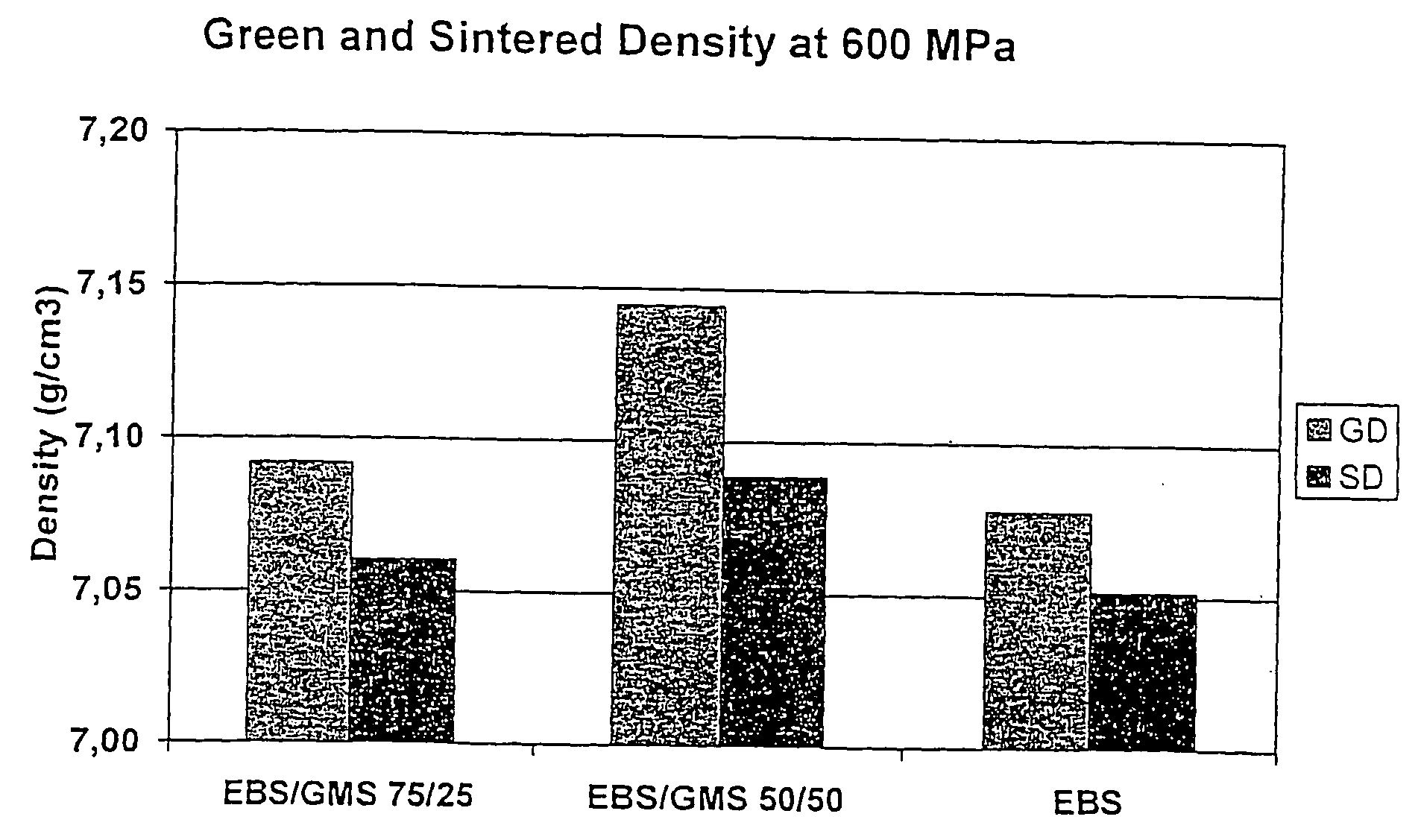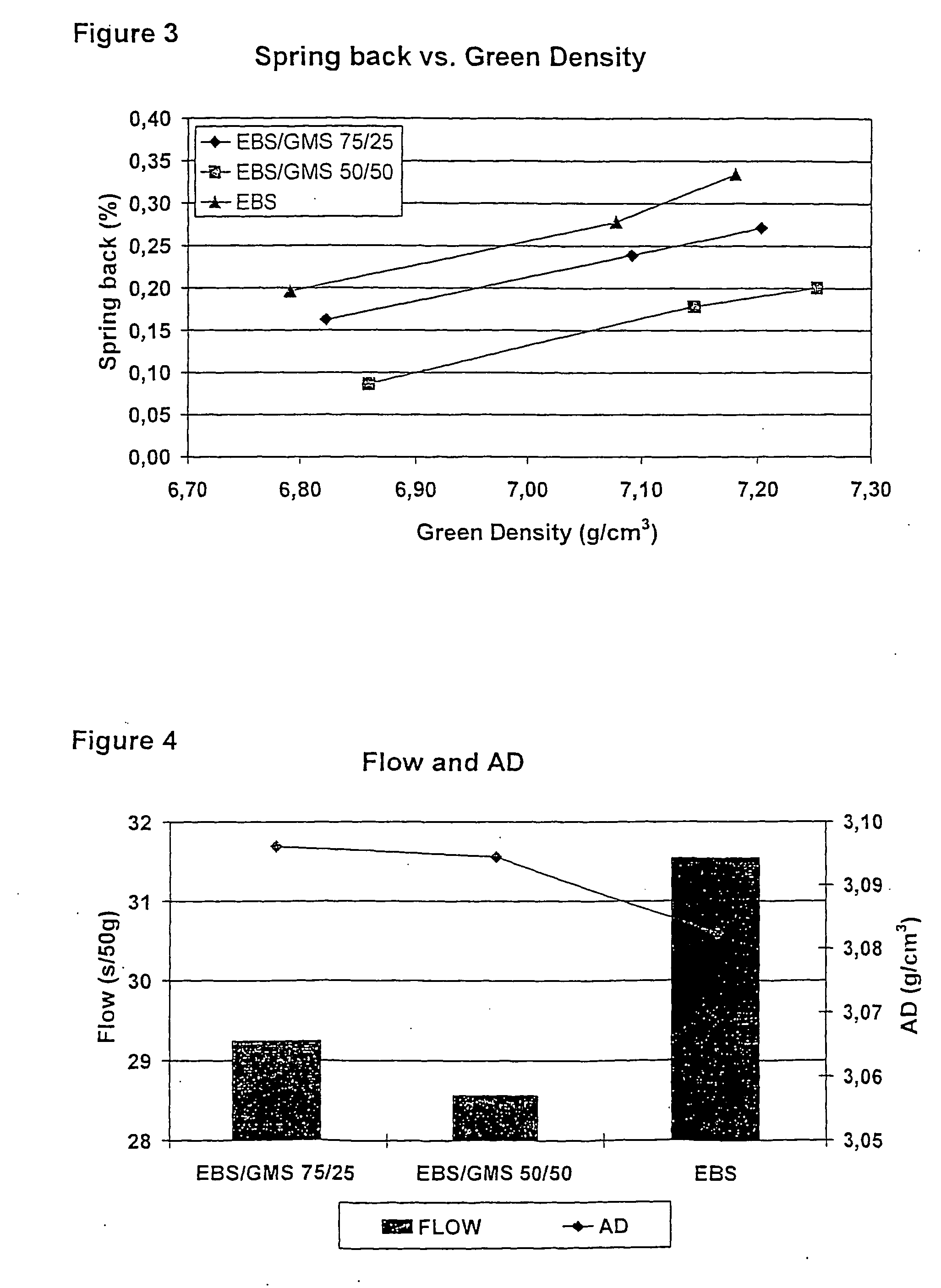Metal powder composition including a bonding lubricant and a bonding lubricant comprising glyceryl stearate
a technology of glyceryl stearate and metal powder, which is applied in the direction of lubricant composition, transportation and packaging, metal-working apparatus, etc., can solve the problems of rust formation in the die cavity, aqueous dispersions are a source of rust formation, and the thickness of the film within the die cavity is a tendency to vary, so as to achieve high and consistent densities
- Summary
- Abstract
- Description
- Claims
- Application Information
AI Technical Summary
Benefits of technology
Problems solved by technology
Method used
Image
Examples
example
[0034] The following example, which is not intended to be limiting, present certain embodiments and advantages of the present invention. Unless otherwise indicated any percentages are on a weight basis.
[0035] The mixtures listed in table 1 below were prepared:
TABLE 1SampleGMS*EBS**1 0100 2257535050
*Glyceryl monostearate
**Etylene bisstearamide
[0036] The iron-based powder in all samples was ASC100.29 which is a water atomised, high purity iron powder available from Höganäs AB, Sweden. The total amount of lubricant was 0.8% which was admixed in the powder composition together with 0.5% graphite(C-uf4). The dry ingredients in the different test mixtures i.e. the iron powder, the lubricant and the graphite were blended to homogenous mixtures and added to a die cavity before compaction. The compaction operation was performed with the different powder mixtures at 400, 600 and 800 MPa at ambient temperature.
[0037] The different test mixtures were tested as regards green density (GD), s...
example 2
[0042] This example illustrates further advantages with the present invention. In this example EBS / GMS in different ratios were used as a binder / lubricant according to U.S. Pat. No. 5,480,469 (Storstrom, et al.)
[0043] The binder / lubricant mixtures listed in table 2 below were prepared, and the content of EBS and GMS expressed as % of the lubricant composition;
TABLE 2SampleEBSGMS4100 0590106752575050
[0044] Four different metal powder composition were prepared by homogenously mixing ASC 100.29 with 2% of copper powder, 0.5% of graphite and 0.6% of a lubricant / binder composition according to table 2. The compositions were heated to 150° C. during mixing and melting of the binder / lubricant and subsequently cooled until the binder / lubricant had solidified.
[0045] Samples from the four metal powder compositions were produced by a uniaxial pressing operation at 600 MPa and spring back (SB), green densaity (GD) and green strength were measured. From the following table 3 it can be concl...
PUM
| Property | Measurement | Unit |
|---|---|---|
| density | aaaaa | aaaaa |
| density | aaaaa | aaaaa |
| melting point | aaaaa | aaaaa |
Abstract
Description
Claims
Application Information
 Login to View More
Login to View More - R&D
- Intellectual Property
- Life Sciences
- Materials
- Tech Scout
- Unparalleled Data Quality
- Higher Quality Content
- 60% Fewer Hallucinations
Browse by: Latest US Patents, China's latest patents, Technical Efficacy Thesaurus, Application Domain, Technology Topic, Popular Technical Reports.
© 2025 PatSnap. All rights reserved.Legal|Privacy policy|Modern Slavery Act Transparency Statement|Sitemap|About US| Contact US: help@patsnap.com



